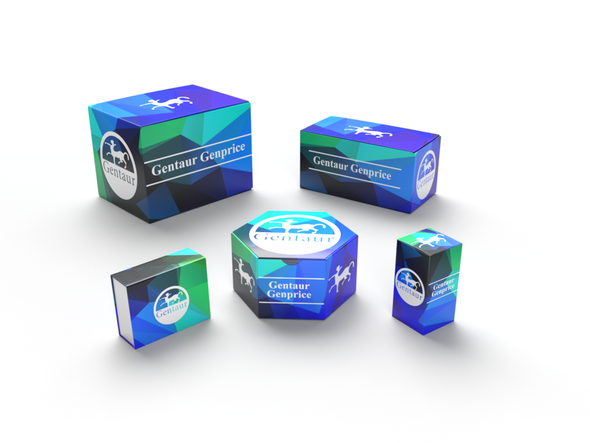Description
Retinoic Acid Receptor Antibody [763] | 50-176 | Gentaur UK, US & Europe Distribution
Host: Mouse
Reactivity: Human, Mouse, Dog, Bovine
Homology: N/A
Immunogen: Peptide corresponding to amino acid residues from the N-terminal region of human retinoic acid receptor, a-isotype.
Research Area: Other
Tested Application: WB
Application: The antibody has been directly tested for reactivity in Western blots in human tissues. It is anticipated that the antibody will also work with bovine, canine and mouse tissues based on the fact that these species have 100% homology with the amino acid sequence used as antigen.
Specificiy: N/A
Positive Control 1: N/A
Positive Control 2: N/A
Positive Control 3: N/A
Positive Control 4: N/A
Positive Control 5: N/A
Positive Control 6: N/A
Molecular Weight: 48
Validation: N/A
Isoform: N/A
Purification: Protein G purified
Clonality: Monoclonal
Clone: 763
Isotype: IgG1
Conjugate: Unconjugated
Physical State: Liquid
Buffer: N/A
Concentration: N/A
Storage Condition: Retinoic Acid Receptor antibody can be stored at -20˚C and is stable at -20˚C for at least 1 year.
Alternate Name: N/A
User Note: Optimal dilutions for each application to be determined by the researcher.
BACKGROUND: Retinoic acid (RA; active metabolite of vitamin A) plays a prominent role in regulating the transition of proliferating precursor cells (such as carcinoma cells and neuronal precursors) to postmitotic differentiated cells (Joshi et al., 2005) . The retinoid X receptors (RXRs) family (RXRalpha, beta and gamma) , preferentially bind 9-cis-RA and regulate gene transcription by forming heterodimers with a second family of RA receptors. RAs have been suggested to potentially play a therapeutic role in cervical cancer (Abu et al., 2005) . RAs are known to play key roles in neuronal development and an increasing body of evidence indicates that retinoid signaling may regulate synaptic plasticity and associated learning and memory behaviors (Lane and Bailey, 2005) .

![Retinoic Acid Receptor Antibody [763] Retinoic Acid Receptor Antibody [763]](https://cdn11.bigcommerce.com/s-1rdwiq712m/images/stencil/608x608/products/461574/467403/gentaur-genprice__26005.1661610467__29809.1661628092__75433.1661676199__77988.1661684280__64362.1661692443__02085.1662049603__45075.1662119302__91744.1662191540__21580.1662291419__45385.1663494938.png?c=1)
![Retinoic Acid Receptor Antibody [336] Retinoic Acid Receptor Antibody [336]](https://cdn11.bigcommerce.com/s-1rdwiq712m/images/stencil/590x590/products/461575/467404/gentaur-genprice__26005.1661610467__29809.1661628092__75433.1661676199__77988.1661684280__64362.1661692443__02085.1662049603__45075.1662119302__91744.1662191540__21580.1662291419__87196.1663494938.png?c=1)



